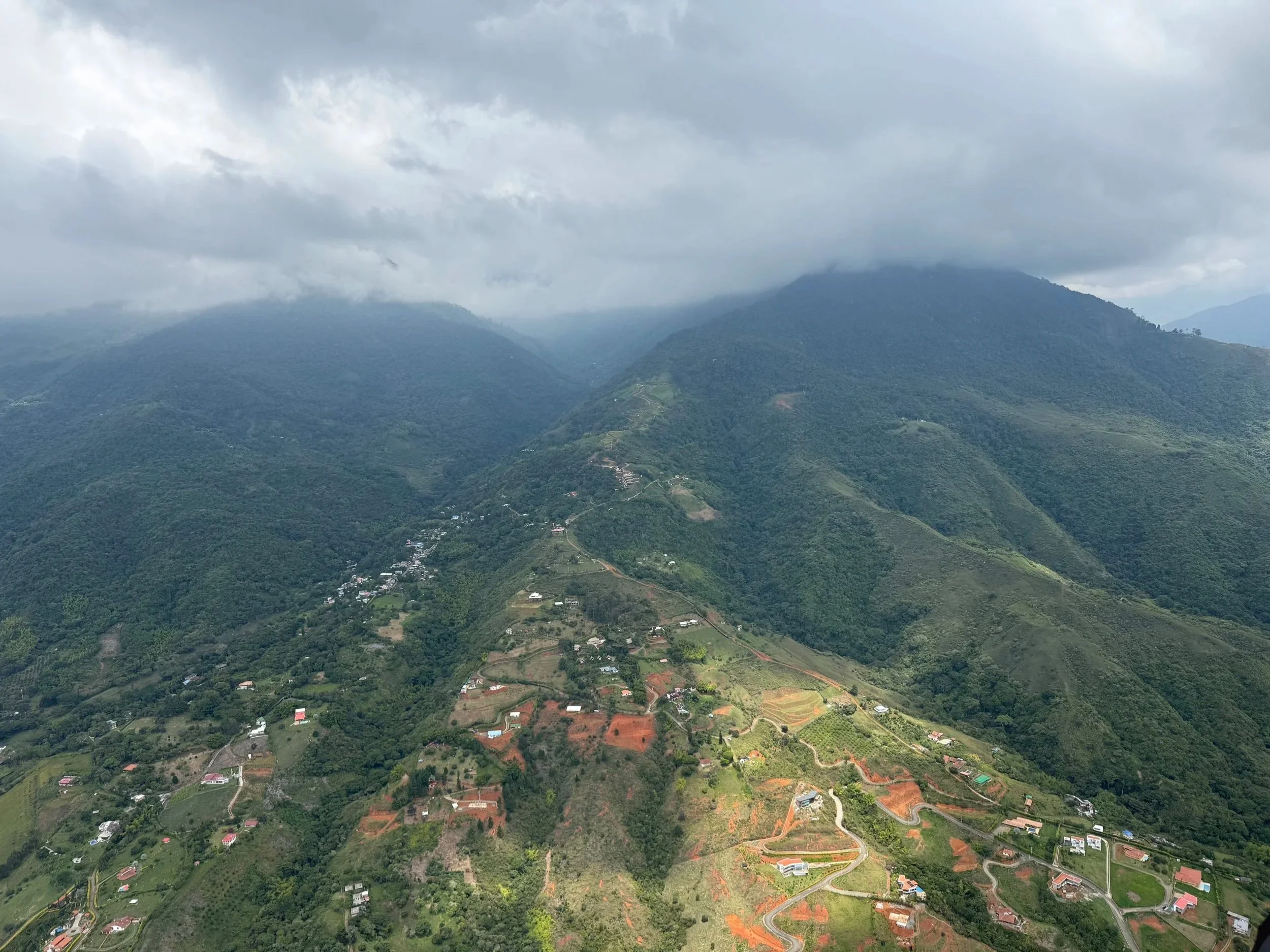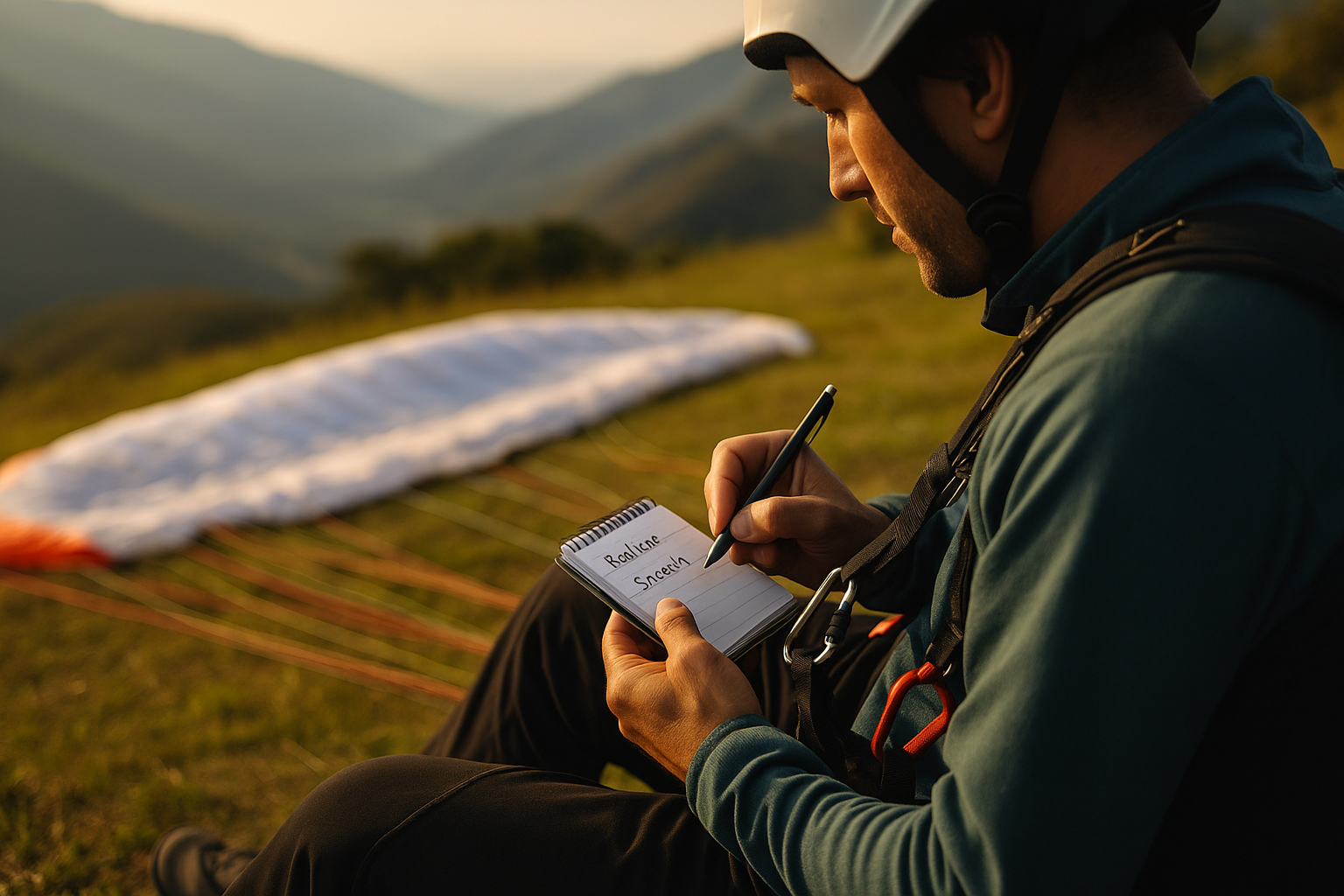Fuel, Focus and Fly: A Holistic XC Prep for Piedechinche, Colombia
If you’re getting ready for cross-country paragliding in Piedechinche, Colombia, here’s the simple formula I lean on: Fuel your body, Focus your mind, and Fly the terrain in front of you. Colombia rewards a plan—hot valleys, a predominantly west-facing mountain, southeast-facing spine facets that catch early sun, and big temperature swings from ground to cloudbase.
This guide expands on three bite-size reads:
Hydrate for Highs & Lows (Quick Snap #4): https://www.skyoutpg.com/skyout-insights/skyout-quick-snap-hydrate-for-highs-amp-lows
Read the Ridge Shadows (Quick Snap #5): https://www.skyoutpg.com/skyout-insights/skyout-quick-snap-read-the-ridge-shadows
Two Goals, One Flight (Quick Snap #6): https://www.skyoutpg.com/skyout-insights/skyout-quick-snap-two-goals-one-flight
Small sips, often—your brain will thank you at cloudbase.
1) Fuel — Hydrate for highs & lows (Colombia edition)
Why it matters here
Expect hot 25–35 °C on launch with intense sun. And of course a cooler feel near 2,500–3,000 m cloudbase. That swing + altitude + longer flights = dehydration sneaking up on you.
Your simple plan
Pre-launch (30–60 min): 400–600 ml water + light electrolytes. Easy carbs with a pinch of salt.
Carry: 1.5–2.0 L on hotter days (bladder or soft flasks).
In-air: 2–3 mouthfuls every 10–15 min. Set a reminder on your watch/vario.
Electrolytes: In heat/humidity, aim roughly 300–600 mg sodium/hour.
Post-flight (≤30 min): ~500 ml water + electrolytes and a salty snack.
Pro tips
Altitude dries you out—more breathing = more water loss.
Foggy head or hand cramps at cloudbase? You likely need salts, not just more plain water.
Clip the bladder hose near your chest strap so you don’t forget to sip.
Quick refresher → Hydrate for Highs & Lows:
https://www.skyoutpg.com/skyout-insights/skyout-quick-snap-hydrate-for-highs-amp-lows
SE-facing facets glow first; the sun–shade line slides downslope as the valley heats.
Looking back at the Piedechinche Colombia Paraglider Launch
2) Fly — Read the ridge shadows (west-facing Piedechinche)
What’s unique here
The main slope faces west, so full-face heating ramps up later in the day. Many ridge spines include southeast-facing facets that catch first light as the sun rises. As the sun climbs, the sun–shade line slides downslope toward the valley, which often heats before the whole west face does.
How to use that
Sunrise scan (on the ground): Find the SE-facing facets glowing first. They toss crisp little shadows onto adjacent west faces—early thermal hints.
Late morning → midday transition: As facet shadows lift and the valley brightens (sun–shade line drops toward the base), expect your first reliable climbs along the light/dark boundary.
Launch timing: Hook in when small facets are lit and the valley’s cooking—two heat sources feeding that first climb.
In-air line (“fly the fence”): Keep your wing in warm sunlit air, harness skimming the cooler side. Crab across the boundary to test; when the vario chirps, tighten a gentle 270–360° and re-center quickly.
Refine: If drift pulls you lee, bail early and reset upwind on the next lit facet or along the boundary.
Two-minute scan script
Mark 2–3 SE-facing facets catching first light.
Note where the sun–shade line sits on the slope and down on the valley floor.
Visualize your first climb: “Enter at the line, feel the wing load, tiny weight-shift, gentle brake, commit.”
Learn the pattern → Read the Ridge Shadows:
https://www.skyoutpg.com/skyout-insights/skyout-quick-snap-read-the-ridge-shadows
One baseline win + one stretch goal—every flight.
3) Focus — “Two Goals, One Flight” (deeper, practical, measurable)
Why two goals?
One guarantees a win (baseline), one pushes growth (stretch). Both must be in your control, measurable, and matched to today’s conditions.
Rules
Exactly 1 baseline + 1 stretch (no more).
Controllable: “Arrive high at TP1” ❌ vs. “Leave ridge at ≥ 6:1 glide” ✅.
Measurable: time, altitude gain, distance, accuracy, L/D, yes/no.
Condition-aware: Lower the bar on blue/low-base days; nudge up on booming days.
Goal ideas to help you set yours
Returning / newer to XC
Baseline: 30–45 s stable thermal turn; textbook landing pattern; trim-speed glide on first transition.
Stretch: +150–200 m centered climb; link two thermals (exit ≥80% peak, re-center ≤2 min); landing accuracy ≤30 m.
Intermediate
Baseline: Re-center ≤10 s after a surge; first valley crossing L/D ≥6:1; stay up 45–60 min.
Stretch: Sustain +2 m/s for 60 s in core; chain three thermals with planned exit heights; commit to a sun–shade fence trigger and prove it.
Advanced
Baseline: Upwind gain ≥50 m before committing to a glide; keep bank within a chosen 25–35° window; final-glide calc within ±50 m of plan.
Stretch: Route-choice A/B test (shadow edge vs. cloud street) and verify +100–200 m advantage; wind drift ≤100 m off plan during a 300 m climb; landing box ≤15 m.
Match goals to the day
Low base / blue: Baseline = 45 s in first lift; Stretch = +150 m before any crossing.
Hot PM / active valley breeze: Baseline = leave ridge ≥6:1, arrive ≥200 m AGL; Stretch = link 2 thermals along the light/dark boundary.
Windy / cross: Baseline = one safe spine attempt, bail early if lee; Stretch = complete your planned escape route cleanly.
60-second pre-launch
Say your two goals out loud.
Visualize entry → settle → exit (10 breaths).
Set reminders (hydration + debrief note).
Measure fast
In-air: watch climb rate, time circling, L/D.
After: check IGC (XCTrack / Flyskyhy / device) for max climb, time in core, arrival altitude, landing distance.
Mark ✓/✗ and one sentence of why.
Template and more examples → Two Goals, One Flight:
https://www.skyoutpg.com/skyout-insights/skyout-quick-snap-two-goals-one-flight
Tiny worksheet (copy/paste and fill in)
Sky blue cumulus | Valley breeze
Your Piedechinche day-of routine (save this)
Fuel: Pre-launch 400–600 ml + electrolytes; pack 1.5–2 L; sip every 10–15 min.
Scan: SE-facing facets first; note the sun–shade line dropping toward the valley.
Focus: Set one baseline and one stretch goal; say them out loud.
Fly: Test the light/dark boundary, commit gently, re-center quickly; protect arrival altitudes.
Recover: 500 ml + electrolytes within 30 min; salty bite; quick notes on baseline/stretch.
Micro-kit that pays off
1.5–2 L bladder + electrolyte tabs/powder
Soft-flask backup for hot days
Snack reachable with gloves (dates, gel, small bar)
Fine-tip pen + mini notepad (goals & debrief)
Chest-strap mount for vario/GPS (keep the helmet clean)



